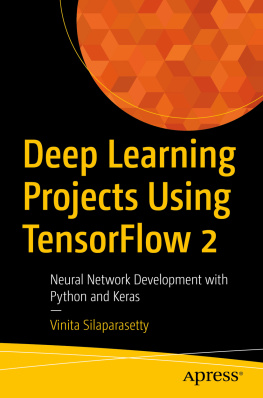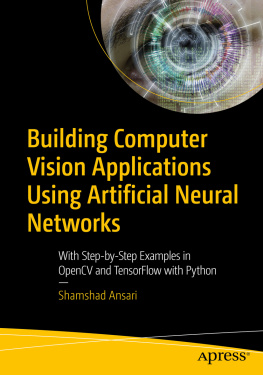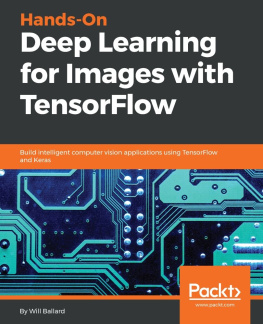Practical Deep Learning for Cloud, Mobile, and Edge
by Anirudh Koul , Siddha Ganju , and Meher Kasam
Copyright 2020 Anirudh Koul, Siddha Ganju, Meher Kasam. All rights reserved.
Printed in the United States of America.
Published by OReilly Media, Inc. , 1005 Gravenstein Highway North, Sebastopol, CA 95472.
OReilly books may be purchased for educational, business, or sales promotional use. Online editions are also available for most titles (http://oreilly.com). For more information, contact our corporate/institutional sales department: 800-998-9938 or corporate@oreilly.com .
- Acquisitions Editor: Rachel Roumeliotis
- Development Editor: Nicole Tache
- Production Editor: Christopher Faucher
- Copyeditor: Octal Publishing, LLC
- Proofreader: Christina Edwards
- Indexer: Judith McConville
- Interior Designer: David Futato
- Cover Designer: Karen Montgomery
- Illustrator: Rebecca Demarest
- October 2019: First Edition
Revision History for the First Edition
- 2019-10-14: First Release
See http://oreilly.com/catalog/errata.csp?isbn=9781492034865 for release details.
The OReilly logo is a registered trademark of OReilly Media, Inc. Practical Deep Learning for Cloud, Mobile, and Edge, the cover image, and related trade dress are trademarks of OReilly Media, Inc.
The views expressed in this work are those of the authors, and do not represent the publishers views. While the publisher and the authors have used good faith efforts to ensure that the information and instructions contained in this work are accurate, the publisher and the authors disclaim all responsibility for errors or omissions, including without limitation responsibility for damages resulting from the use of or reliance on this work. Use of the information and instructions contained in this work is at your own risk. If any code samples or other technology this work contains or describes is subject to open source licenses or the intellectual property rights of others, it is your responsibility to ensure that your use thereof complies with such licenses and/or rights.
978-1-492-03486-5
[LSI]
Preface
We are experiencing a renaissance of artificial intelligence, and everyone and their neighbor wants to be a part of this movement. Thats quite likely why you are browsing through this book. There are tons of books about deep learning out there. So you might ask us, very reasonably, why does this book even exist? Well get to that in just a second.
During our own deep learning journeys since 2013 (while building products at companies including Microsoft, NVIDIA, Amazon, and Square), we witnessed dramatic shifts in this landscape. Constantly evolving research was a given and a lack of mature tooling was a reality of life.
While growing and learning from the community, we noticed a lack of clear guidance on how to convert research to an end product for everyday users. After all, the end user is somewhere in front of a web browser, a smartphone, or an edge device. This often involved countless hours of hacking and experimentation, extensively searching through blogs, GitHub issue threads, and Stack Overflow answers, and emailing authors of packages to get esoteric knowledge, as well as occasional Aha! moments. Even the books on the market tended to focus more on theory or how to use a specific tool. The best we could hope to learn from the available books was to build a toy example.
To fill this gap between theory and practice, we originally started giving talks on taking artificial intelligence from research to the end user with a particular focus on practical applications. The talks were structured to showcase motivating examples, as well as different levels of complexity based on skill level (from a hobbyist to a Google-scale engineer) and effort involved in deploying deep learning in production. We discovered that beginners and experts alike found value in these talks.
Over time, the landscape thankfully became accessible to beginners and more tooling became available. Great online material like Fast.ai and DeepLearning.ai made understanding how to train AI models easier than ever. Books also cornered the market on teaching fundamentals using deep learning frameworks such as TensorFlow and PyTorch. But even with all of this, the wide chasm between theory and production remained largely unaddressed. And we wanted to bridge this gap. Thus, the book you are now reading.
Using approachable language as well as ready-to-run fun projects in computer vision, the book starts off with simple classifiers assuming no knowledge of machine learning and AI, gradually building to add complexity, improve accuracy and speed, scale to millions of users, deploy on a wide variety of hardware and software, and eventually culminate in using reinforcement learning to build a miniature self-driving car.
Nearly every chapter begins with a motivating example, establishes the questions upfront that one might ask through the process of building a solution, and discusses multiple approaches for solving problems, each with varying levels of complexity and effort involved. If you are seeking a quick solution, you might end up just reading a few pages of a chapter and be done. Someone wanting to gain a deeper understanding of the subject should read the entire chapter. Of course, everyone should peruse the case studies included in these chapters for two reasonsthey are fun to read and they showcase how people in the industry are using the concepts discussed in the chapter to build real products.
We also discuss many of the practical concerns faced by deep learning practitioners and industry professionals in building real-world applications using the cloud, browsers, mobile, and edge devices. We compiled a number of practical tips and tricks, as well as life lessons in this book to encourage our readers to build applications that can make someones day just a little bit better.
To the Backend/Frontend/Mobile Software Developer
You are quite likely a proficient programmer already. Even if Python is an unfamiliar language to you, we expect that you will be able to pick it up easily and get started in no time. Best of all, we dont expect you to have any background in machine learning and AI; thats what we are here for! We believe that you will gain value from the books focus on the following areas:
How to build user-facing AI products
How to train models quickly
How to minimize the code and effort required in prototyping
How to make models more performant and energy efficient
How to operationalize and scale, and estimate the costs involved
Discovering how AI is applied in the industry with 40+ case studies and real-world examples
Developing a broad-spectrum knowledge of deep learning
Developing a generalized skill set that can be applied on new frameworks (e.g., PyTorch), domains (e.g., healthcare, robotics), input modalities (e.g., video, audio, text), and tasks (e.g., image segmentation, one-shot learning)
To the Data Scientist
You might already be proficient at machine learning and potentially know how to train deep learning models. Good news! You can further enrich your skill set and deepen your knowledge in the field in order to build real products. This book will help inform your everyday work and beyond by covering how to:
Speed up your training, including on multinode clusters
Build an intuition for developing and debugging models, including hyperparameter tuning, thus dramatically improving model accuracy





